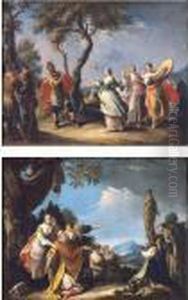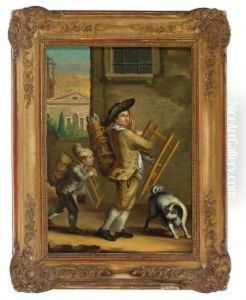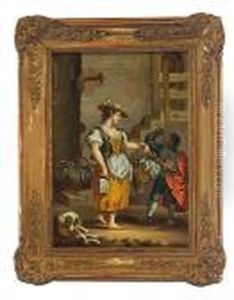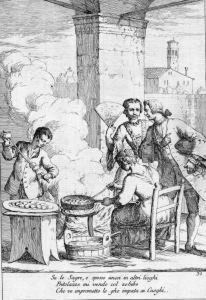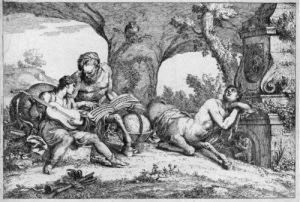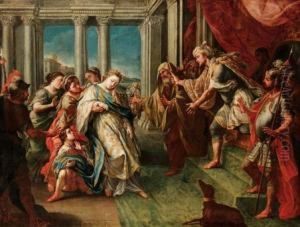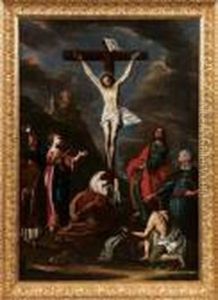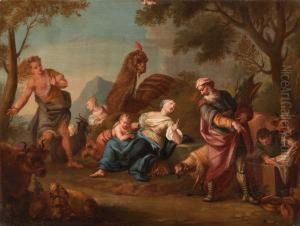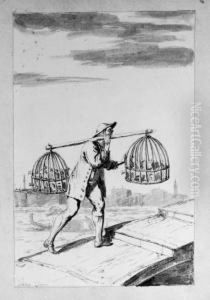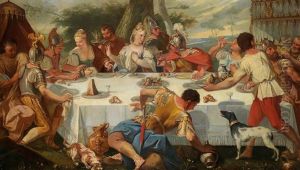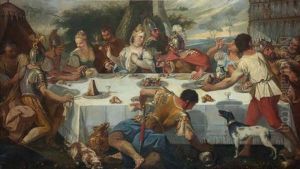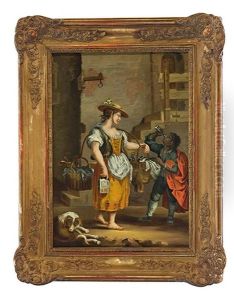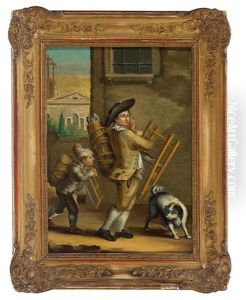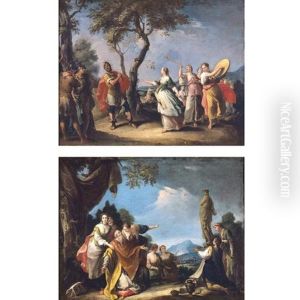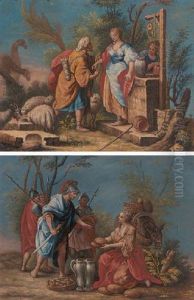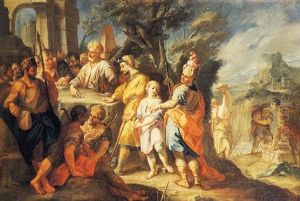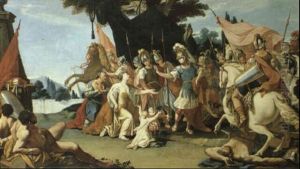Gaetano Zompini Paintings
Gaetano Zompini was an Italian engraver and painter, born in 1700 in Nervesa della Battaglia, a small town in the Republic of Venice. He is primarily remembered for his detailed depictions of daily life in 18th-century Venice. Zompini trained as an artist in Venice and was influenced by the Rococo style, which was popular during his time.
Zompini's most famous work is 'Le arti che vanno per via nella città di Venezia' ('The Arts that Go Through the Streets of the City of Venice'), which is a collection of 60 engravings that he completed in 1753. These engravings are valuable for their historical and sociological content, as they provide a vivid portrayal of the various trades and street vendors in Venice during the 18th century. They are characterized by their attention to detail and the dynamic representation of the figures.
Throughout his career, Gaetano Zompini also worked on religious themes, and he produced several altarpieces for churches in Venice and its surroundings. His style was known for its clarity, precise drawing, and the lively portrayal of his subjects.
Zompini died in 1778 in Venice. Although not as widely remembered as some of his contemporaries, his work is considered important for understanding the social fabric and urban culture of Venice in the 1700s. Today, his engravings are held in high regard by art historians and collectors for their documentary value and artistic merit.
